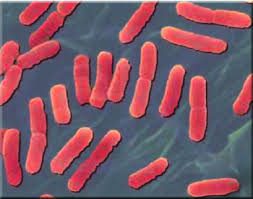Water-borne Diseases, Causes, and Preventive Measures
Water-borne diseases are infectious diseases spread primarily through contaminated water. Though these diseases are spread either directly or through flies or filth, water is the chief medium for spread of these diseases and hence they are termed as water-borne diseases.
Most intestinal (enteric) diseases are infectious and are transmitted through faecal waste. Pathogens – which include virus, bacteria, protozoa, and parasitic worms – are disease-producing agents found in the faeces of infected persons. These diseases are more prevalent in areas with poor sanitary conditions.
These pathogens travel through water sources and interfere directly through persons handling food and water. Since these diseases are highly infectious, extreme care and hygiene should be maintained by people looking after an infected patient.
Hepatitis, cholera, dysentery, and typhoid are the more common water-borne diseases that affect large populations in the tropical regions.
A large number of chemicals that either exist naturally in the land or are added due to human activity dissolve in the water, thereby contaminating it and leading to various diseases.
Pesticides
The organophosphates and the carbonates present in pesticides affect and damage the nervous system and can cause cancer.
Some of the pesticides contain carcinogens that exceed recommended levels. They contain chlorides that cause reproductive and endocrinal damage.
Lead
Lead is hazardous to health as it accumulates in the body and affects the central nervous system. Children and pregnant women are most at risk.
Fluoride
Excess fluorides can cause yellowing of the teeth and damage to the spinal cord and other crippling diseases.
Nitrates
Drinking water that gets contaminated with nitrates can prove fatal especially to infants that drink formula milk as it restricts the amount of oxygen that reaches the brain causing the blue baby syndrome.
It is also linked to digestive tract cancers. It causes algae to bloom resulting in eutrophication in surface water.
Petrochemicals
Benzene and other petrochemicals can cause cancer even at low exposure levels.
Chlorinated solvents
These are linked to reproduction disorders and to some cancers.
Arsenic
Arsenic poisoning through water can cause liver and nervous system damage, vascular diseases and also skin cancer.
Other heavy metals
Heavy metals cause damage to the nervous system and the kidney, and other metabolic disruptions.
Salts
It makes the fresh water unusable for drinking and irrigation purposes. Exposure to polluted water can cause diarrhoea, skin irritation, respiratory problems, and other diseases, depending on the pollutant that is in the water body.
Read Also: Best Methods of Improving Drinking Water Quality
Stagnant water and other untreated water provide a habitat for the mosquito and a host of other parasites and insects that cause a large number of diseases especially in the tropical regions.
Among these, malaria is undoubtedly the most widely distributed and causes most damage to human health.
Preventive Measures of Water-borne Diseases
Water-borne epidemics and health hazards in the aquatic environment are mainly due to improper management of water resources. Proper management of water resources has become the need of the hour as this would ultimately lead to a cleaner and healthier environment.
In order to prevent the spread of water-borne infectious diseases, people should take adequate precautions.

The city water supply should be properly checked and necessary steps taken to disinfect it. Water pipes should be regularly checked for leaks and cracks. At home, the water should be boiled, filtered, or other methods and necessary steps taken to ensure that it is free from infection.
Minamata: Environmental Contamination with Methyl Mercury
In Minamata, Japan, inorganic mercury was used in the industrial production of acetaldehyde. It was discharged into the nearby bay as waste water and was ingested by organisms in the bottom sediments.
Fish and other creatures in the sea were soon contaminated and eventually residents of this area who consumed the fish suffered from MeHg (methyl mercury) intoxication, later known as the Minamata disease.
Read Also: What is Water Quality Monitoring?
The disease was first detected in 1956 but the mercury emissions continued until 1968. But even after the emission of mercury stopped, the bottom sediment of the polluted water contained high levels of this mercury.
Various measures were taken to deal with this disease. Environmental pollution control, which included cessation of the mercury process; industrial effluent control, environmental restoration of the bay; and restrictions on the intake of fish from the bay.
The research and investigative activities were promoted assiduously, and compensation and help was offered by the Japanese Government to all those affected by the disease.
The Minamata disease proved a turning point, towards progress in environment protection measures. This experience clearly showed that health and environment considerations must be integrated into the process of economic and industrial development from an early stage.
In conclusion, the effects of pollution on human health which include various diseases condition like asthma, poisoning, brain damage, damage to the liver, cancers and even communicable diseases like cholera, typhoid, dysentery etc. Other physical trauma especially to do with noise pollution include– hearing loss, irritation, sleeplessness etc.
Environmental pollution threatens human health. Air pollution in cities causes a shorter lifespan for city dwellers. The major factor contributing to air pollution is vehicle emissions.
Air pollution is thought to be the cause for 1 in 10 deaths due to lung cancer and is responsible for 24,000 premature deaths in the UK every year.
The effect of pollution generally on heath is overwhelming and everything needs to be done to control it.



